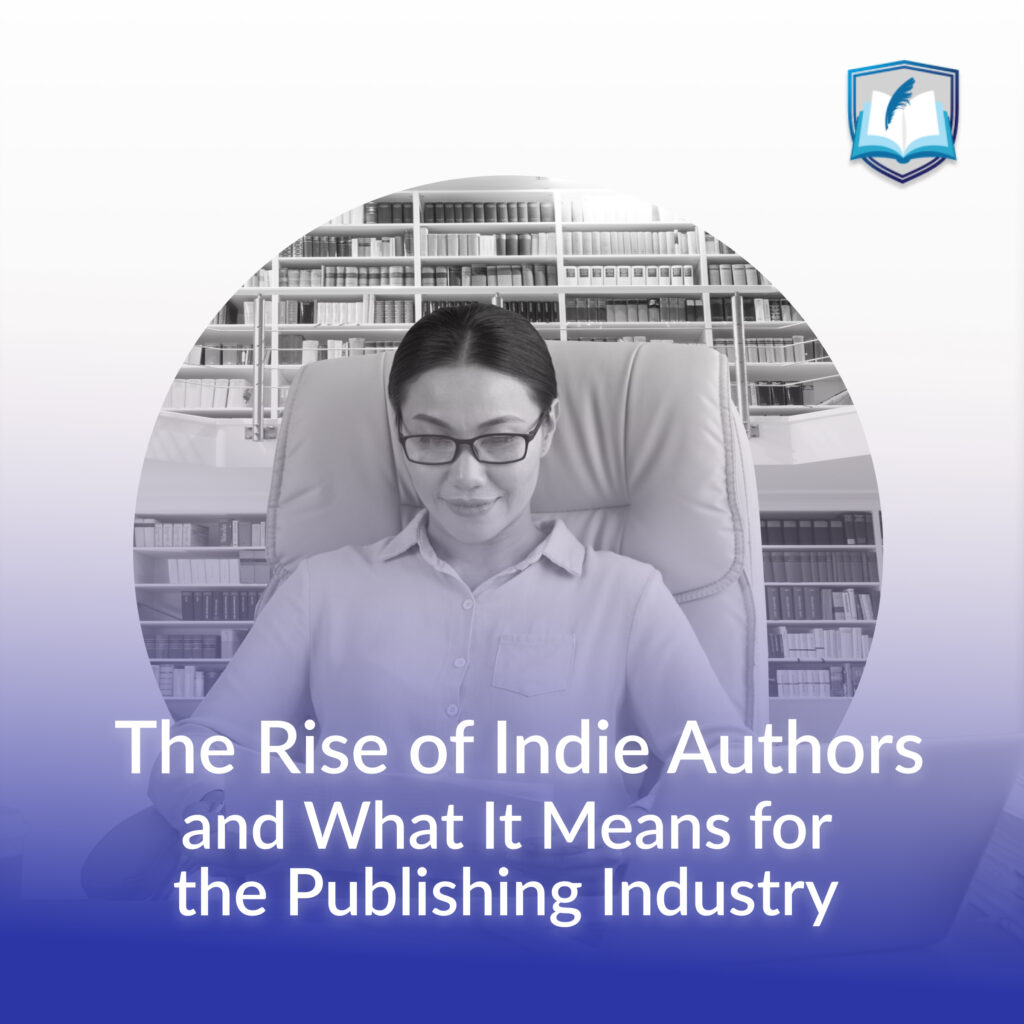In recent years, the publishing industry has undergone a massive transformation, partly thanks to the rise of indie authors. These independent writers are breaking the mold, challenging traditional publishing norms, and paving the way for a more diverse and inclusive literary landscape. But what exactly does it mean for the publishing industry?
Is the rise of indie authors threatening the traditional publishing model, or is it an opportunity for innovation and growth? In this article, we’ll explore the world of indie publishing, the challenges and opportunities that come with it, and what this means for both authors and readers alike. So, if you’re curious about the future of publishing and how the rise of indie authors is shaking things up, read on!
The Rise of Indie Authors and Their Impact on the Publishing Industry
The rise of indie authors has been nothing short of revolutionary. With the advent of self-publishing platforms such as Amazon’s Kindle Direct Publishing (KDP), indie authors can now publish and distribute their books globally without needing a traditional publisher. This has led to an explosion in indie authors, with millions of books now available to readers worldwide.
One of the most significant impacts of the rise of indie authors has been the democratization of the publishing industry. Previously, traditional publishers held the power to decide which books were worthy of publication and which authors deserved a book deal. However, with the rise of indie authors, anyone with a story to tell can publish a book and have it available to readers worldwide. This has led to a more diverse and inclusive literary landscape, with stories and perspectives that were previously underrepresented now getting a chance to be heard.
While the rise of indie authors has undoubtedly positively impacted the publishing industry, it has also presented some challenges. For example, with so many books now available, it can be difficult for readers to navigate the vast sea of options and find the books that are right for them. Additionally, without a traditional publisher, indie authors must handle everything from editing to marketing, which can be daunting for many.
Advantages of Indie Publishing for Authors
Despite the challenges, there are many advantages to indie publishing for authors. The most significant benefit is indie authors’ control over their work. Authors often have to compromise their vision with traditional publishing to fit the publisher’s expectations. However, with indie publishing, authors have complete creative control over their work, from the cover design to the story.
Another advantage of indie publishing is the speed at which authors can get their work to readers. With traditional publishing, finding an agent, securing a book deal, and getting the book to market can take years. However, with indie publishing, authors can have their books available to readers within weeks.
Finally, indie publishing can be more financially rewarding for authors. With traditional publishing, authors typically receive a small percentage of the profits from book sales, with the majority going to the publisher. However, with indie publishing, authors keep a much larger portion of the profits, which can be an essential income stream for successful people.
Challenges Faced by Indie Authors
While there are many advantages to indie publishing, there are also several challenges that indie authors must navigate. One of the biggest challenges is marketing. With so many books available, it can be difficult for indie authors to get their work noticed by readers. Without the marketing power of a traditional publisher, indie authors must rely on their marketing efforts to promote their work.
Another challenge is the lack of support and resources that indie authors can access. Traditional publishers offer their authors a wide range of resources and support, including editing, cover design, and marketing. However, indie authors must handle all of these aspects independently, which can be overwhelming for many.
Finally, there is the issue of credibility. While the rise of indie authors has led to a more diverse and inclusive literary landscape, there is still a perception among some readers that self-published books are of lower quality than traditionally published books. This can make it difficult for indie authors to gain credibility and recognition in the publishing industry.
How Traditional Publishing Houses Are Adapting to the Rise of Indie Authors
While the rise of indie authors has disrupted the traditional publishing model, traditional publishing houses must be more active. Many traditional publishers have recognized the potential of indie authors and have started to adapt their business models to accommodate them.
For example, some traditional publishers have started to offer hybrid publishing options, which combine the benefits of traditional publishing with the creative control of indie publishing. These hybrid publishing options often include editing, cover design, and marketing support while allowing authors to maintain creative control over their work.
Additionally, some traditional publishers have started to acquire successful indie authors and incorporate them into their publishing houses. This allows traditional publishers to tap into the creativity and innovation of indie authors while still providing the resources and support that traditional publishers are known for.
The Future of Publishing with Indie Authors
The rise of indie authors has undoubtedly shaken up the publishing industry, and it’s clear that indie publishing is here to stay. In the future, we expect to see even more innovation and growth in the indie publishing space, with new self-publishing platforms and marketing tools being developed to support indie authors.
Additionally, we can expect traditional publishers to continue adapting and evolving to accommodate indie authors. As the line between traditional publishing and indie publishing continues to blur, we may see a new hybrid publishing model emerge that combines the best of both worlds.
Resources for Indie Authors
Many resources are available if you’re an indie author looking to publish your work. Some popular self-publishing platforms include Amazon’s Kindle Direct Publishing (KDP), Kobo Writing Life, and IngramSpark. These platforms allow you to upload and distribute your book to a global audience without a traditional publisher.
In addition to self-publishing platforms, many writing communities and marketing tools are available to indie authors. Some popular writing communities include Wattpad and Scribophile, which allow you to share your work with other writers and receive feedback. For marketing, tools like BookBub and Goodreads can help you reach a wider audience and promote your work.
Success Stories of Indie Authors
The success stories of indie authors are numerous and inspiring. Take the example of Amanda Hocking, who self-published her young adult paranormal novels and sold over a million copies, or Hugh Howey, who self-published his science fiction novel Wool and secured a book deal with a traditional publisher. These success stories show that indie authors can achieve great things and significantly impact the publishing industry.
The Role of Readers in Supporting Indie Authors
As readers, we have a crucial role in supporting indie authors. By choosing to read and review indie books, we can promote and elevate indie authors and show traditional publishers that there is a demand for diverse and inclusive stories. Additionally, by sharing our love for indie books on social media and with our friends and family, we can help spread the word and support the indie publishing community.
Conclusion
The rise of indie authors is shaking up the publishing industry in exciting and innovative ways. While there are challenges that indie authors must navigate, there are also many advantages to indie publishing, including creative control, speed to market, and financial rewards. As the publishing industry continues to evolve, we expect to see traditional publishing houses adapt and evolve to accommodate indie authors. In contrast, indie authors continue to push the boundaries and break the mold. As readers, we have a crucial role in supporting indie authors and the growth of a more diverse and inclusive literary landscape.




